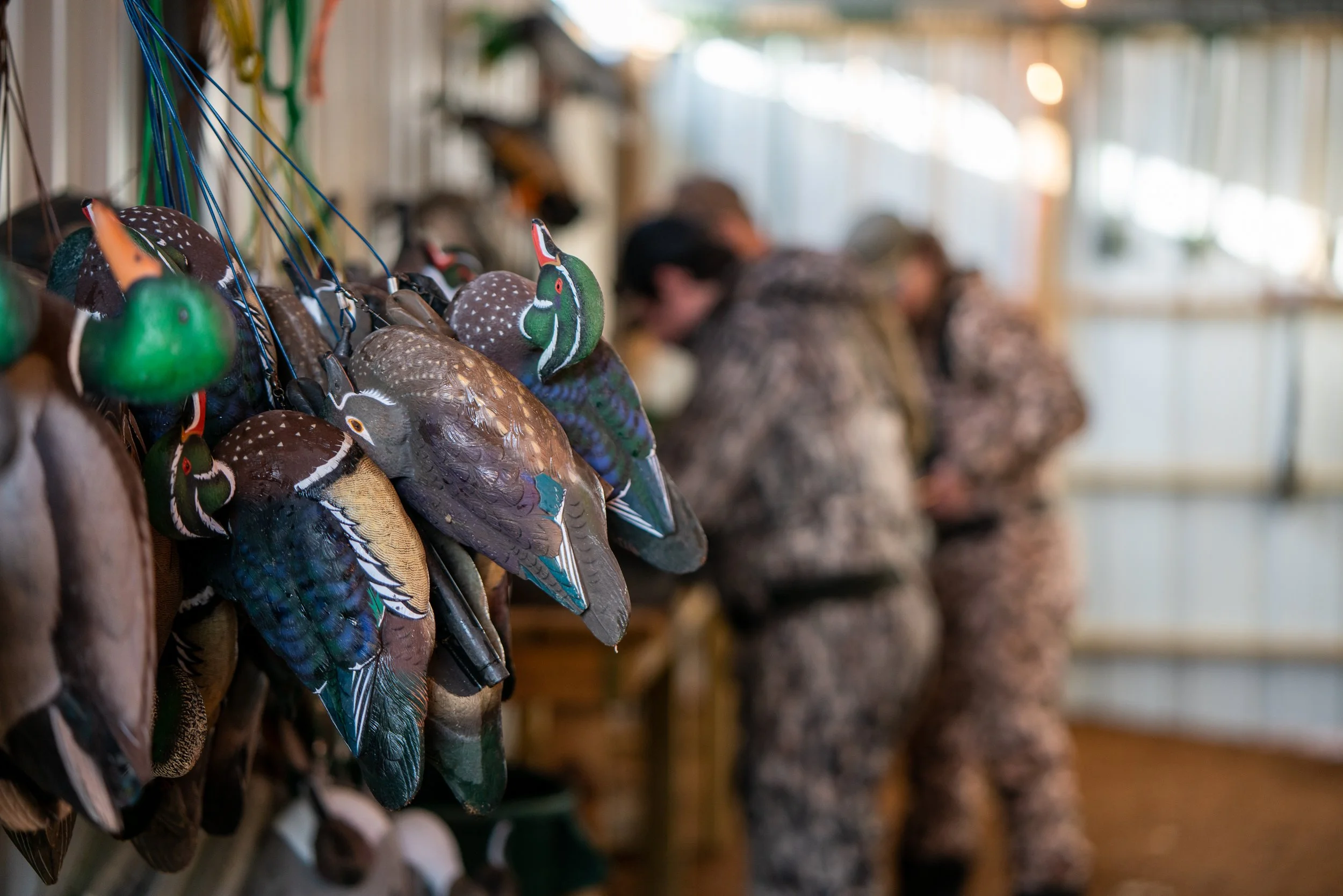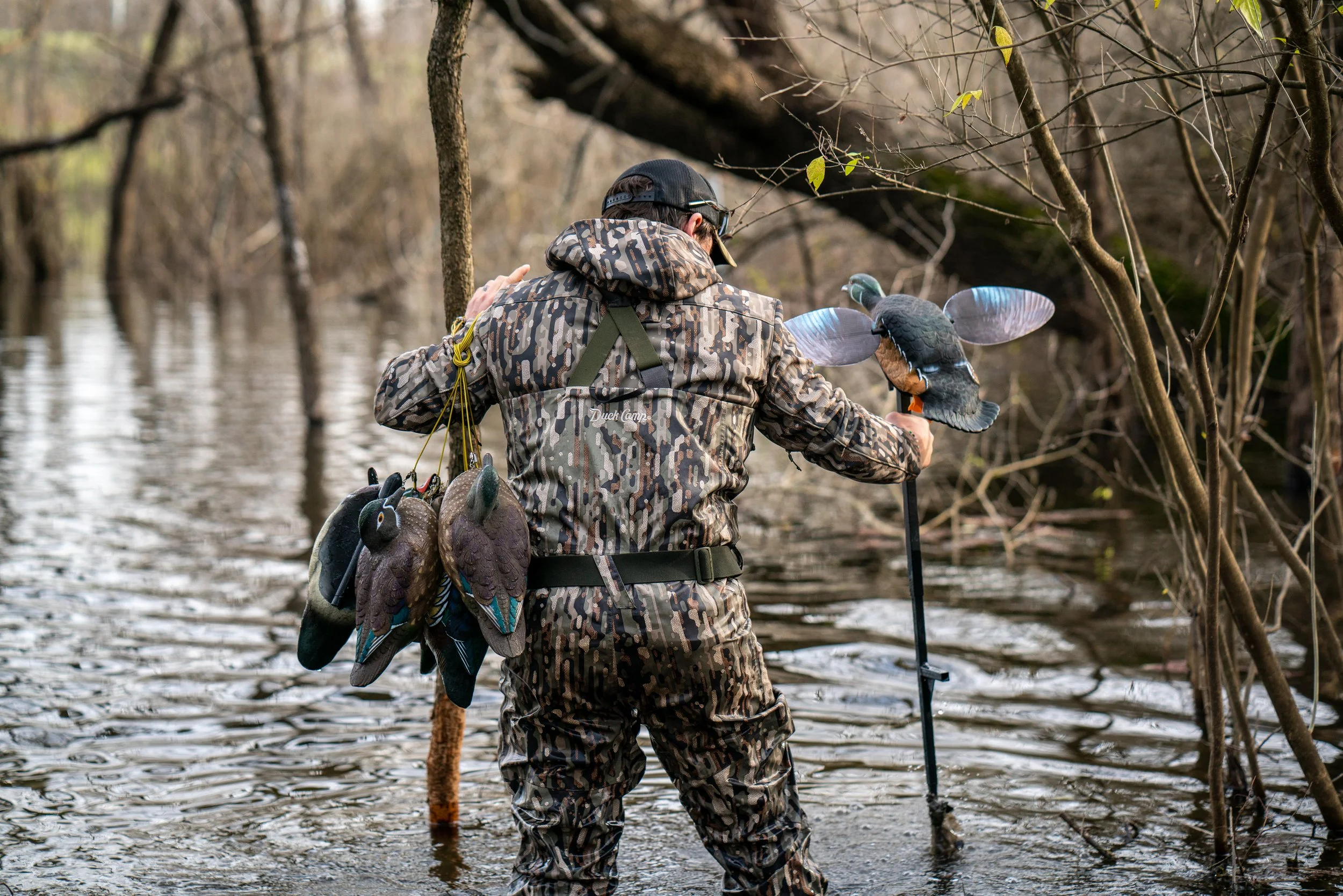The Science of Decoy Spreads: Getting Ducks to Commit
If your decoy spreads are failing you, it isn't because the ducks have gotten smarter; it's because your setup isn't convincing. A major factor in successful waterfowl hunting is about strategy, positioning, and understanding bird behavior. When ducks fly overhead, they read your decoy spread like an open book. Make sure it's telling the right story.
The Fundamentals: Mimicking Nature
Your decoy spread must replicate what ducks expect to see naturally. Ducks are wary survivors. If something feels off, they're outta there. Focus on natural groupings, spacing, and movement. Small clusters and scattered pairs replicate typical duck behavior much better than rigid lines or symmetrical patterns.
Pro Tip: Hunting is just like watching opponents film in sports. Go sit out with a pair of binos and scout your hunting spots. Mirror those observations in your spread.
Reading the Wind and Sun
Duck hunters obsess over wind and sun direction, and with good reason. Ducks prefer landing into the wind, using it as a brake for smooth touchdowns. Arrange your spread accordingly. Set your decoys to provide a natural landing zone with a clear path against the wind.
The sun matters too. Position your spread so the sun is behind you, illuminating incoming ducks and obscuring their vision. Ducks have exceptional eyesight; use this simple advantage to tilt the odds in your favor.
Numbers Matter
Bigger isn’t always better; at least thats why my girlfriend tells me…
Hunters often fall into the trap of assuming more decoys = more ducks. That’s not always true. Early-season ducks expect smaller flocks and natural scattering. Late-season ducks, however, tend to gather in larger groups for safety and warmth. Adjust your spread size accordingly.
Early season: 1-2 dozen decoys.
Mid-season: 2-4 dozen decoys.
Late season: 5+ dozen decoys.
Adjust based on your specific location and bird behavior; again, always match reality as closely as possible, and the best way to do this is scout your birds beforehand.
Motion Decoys: Life or Liability?
Motion decoys can be a game changer if used correctly. Ducks are naturally drawn to movement on water. Spinning wing decoys, jerk rigs, and swimmers add crucial realism.
However, beware: in pressured areas, ducks quickly learn to spot and avoid unnatural movement. Use motion decoys sparingly and selectively. Keep your setups subtle and realistic, especially in heavily hunted regions.
Spacing and Patterns
Too tight or uniform a spread signals danger to wary ducks. Natural flocks have uneven spacing, random clusters, and scattered birds. Loosen your spread, create pockets, and leave realistic landing areas.
Classic spreads like the "J-hook," "U-shape," and "X-pattern" remain staples because they consistently work. They funnel ducks into predetermined landing zones, giving you clear, predictable shooting opportunities. Experiment and adjust on the fly as bird behavior dictates.
Species Specificity
Not all ducks behave the same. Mallards prefer shallow waters with ample landing space. Divers, like canvasbacks and redheads, prefer open water. Pintails and teal might need slightly different setups and decoy species. Tailor your spread to the ducks you're hunting.
Mix decoy species appropriately. Include confidence decoys such as geese, swans, or even herons to add further realism and encourage cautious birds to commit.
Check Your Spread from Above
Before settling into your blind, step back and visualize your spread from above, imagining the duck’s perspective. Look for unnatural patterns, awkward gaps, or tight clumps. Adjust accordingly. A few minutes spent fine-tuning can turn a decent day into a memorable hunt.
Final Thoughts: Constant Evolution
Perfecting decoy spreads isn't a one-and-done scenario. Conditions change; duck behavior changes. Stay adaptable, read the birds, adjust accordingly, and don't be afraid to experiment. The best hunters aren’t married to a single method, but rather constantly refining and responding to the environment.
Remember, decoys aren't magic fairy dust, they’re tools. And like any tool, their effectiveness depends entirely on how well you use them. Master the science behind decoy spreads, and you'll significantly up your game.
Gear Highlights:
After hundreds of successful hunts (and even more learning experiences) our team has put together this quick list of some of our favorite decoy systems out there. Try them out and let us know what you think.



